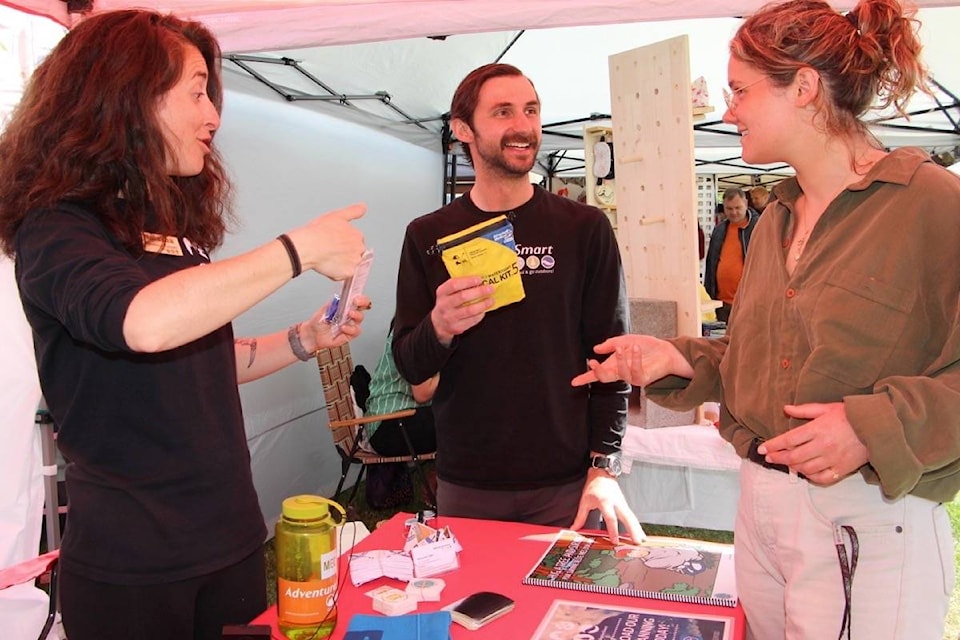AdventureSmart outreach educators Eddie Fast and Natasha Penner are busy sharing safety messaging to visitors and locals alike.
The pair of Search and Rescue ambassadors educated about 500 students between the Wickaninnish Elementary School and Ucluelet Elementary School, facilitated two awareness training workshops, trained 10 Parks Canada staff, and set-up a booth at the Tofino Market recently as part of their public safety tour.
“Safety is super cool,” said outreach educator Natasha Penner. “If you’re a local living on the Coast, it’s important to get messaging into that initial conversation you have with visitors. Don’t get complacent. Remember, a lot of people that come here are seeing the ocean for the very first time.”
BC has over 1,700 search and rescue (SAR) incidents annually, according to BC AdventureSmart executive director and BC co-ordinator Sandra Riches.
The Pacific Rim’s local BC SAR group, West Coast Inland SAR or WISAR, has 26 active members. They performed 19 tasks last year for a total of almost 1,000 hours of volunteer time on tasks alone, Riches notes.
“The SAR calls vary, they do get a pretty wide range of calls. Last year, they had a lot of shoreline searches, different than most groups. Local mountains are seeing a big increase in recreational use and they are starting to get more calls there,” said Riches.
READ: Search crews rescue kids, 6 and 7, stranded overnight on Coquitlam mountain
VIDEO: 442 Squadron rescue operation at Long Beach, Tofino
The goal of BC AdventureSmart outreach is to reduce the number of search and rescue calls by encouraging the three T’s: Trip Planning, Training, and Taking the Essentials.
One takeaway this reporter got out of the training workshop is that the international emergency sign for distress is three of any signal: three blasts of a whistle, three piles of rocks, or three flashes with a mirror.
And, while cell phones can enable rapid communication with SAR authorities, “cell phones aren’t navigational aids,” as outreach educator Penner points out.
She encouraged outdoor enthusiasts to consider battery power and extent of cellular coverage before heading out on a trip.
It is also important to note that the “911” service may not be available within certain regions of Canada, so the direct dial number to rescue authorities is required, according www.AdventureSmart.ca.
There is no charge for search and rescue.
“The British Columbia Search and Rescue Association (BCSARA) believes that the perceived or actual belief that a lost or injured person or their loved ones will be charged for a search and rescue response could directly affect the decision as to if or when a call for professional help will be made. It is our position that any delay in the deployment of Search and Rescue (SAR) services can negatively impact the outcome of a SAR mission,” states the BCSARA website.
“The BCSARA will conduct search and rescue missions when requested to do so by the authorized tasking agencies for persons in danger or distress in the province of BC without charge. We will do so regardless of the reason they have found themselves requiring our assistance.”
AdventureSmart has a Trip Planning App that’s easy to use for planning trips and allows users to send the plan off to family and friends. Anyone interested can download it for free from the Apple App Store or Google Play. Visit: plan.adventuresmart.ca for more information.
